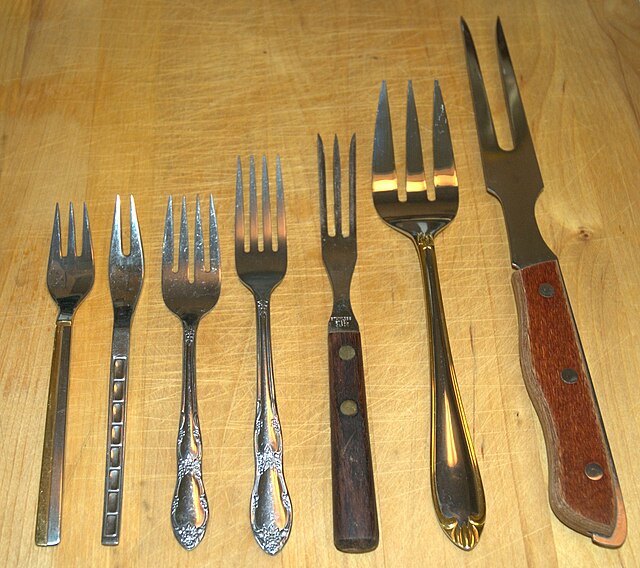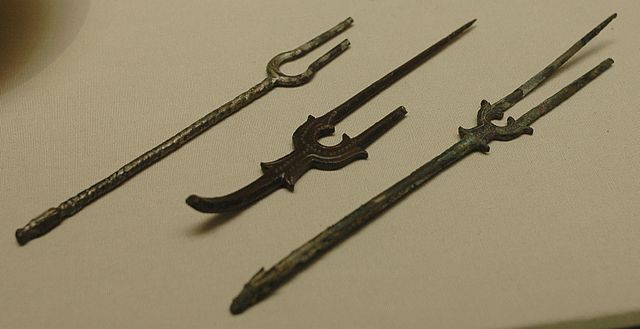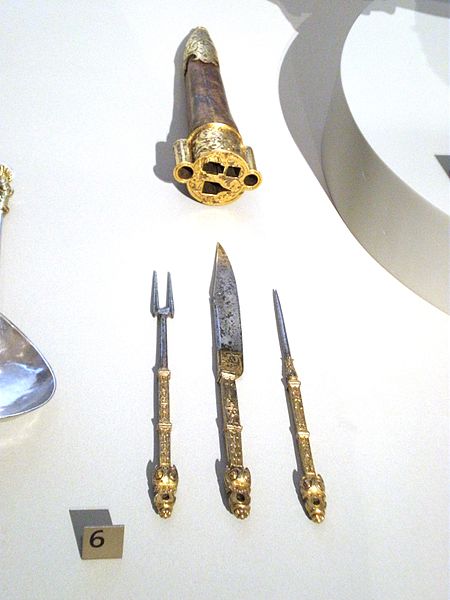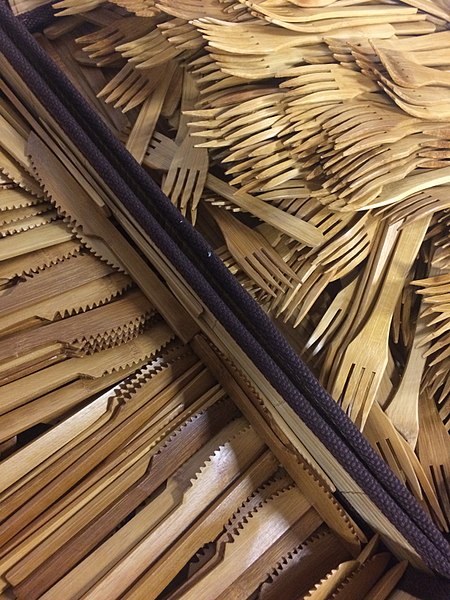In cutlery or kitchenware, a fork is a utensil, now usually made of metal, whose long handle terminates in a head that branches into several narrow and often slightly curved tines with which one can spear foods either to hold them to cut with a knife or to lift them to the mouth.
Assorted forks. From left to right: dessert fork; relish fork; salad fork; dinner fork; cold cuts fork; serving fork; carving fork
Bronze forks made in Persia during the 8th or 9th century
Sasanian silver fork (4th century)
An ice cream fork from the early 20th century
Cutlery includes any hand implement used in preparing, serving, and especially eating food in Western culture. A person who makes or sells cutlery is called a cutler. The city of Sheffield in England has been famous for the production of cutlery since the 17th century and a train – the Master Cutler – running from Sheffield to London was named after the industry. Bringing affordable cutlery to the masses, stainless steel was developed in Sheffield in the early 20th century.
French travelling set of cutlery, 1550–1600, Victoria and Albert Museum
An example of modern cutlery, design by architect and product designer Zaha Hadid (2007).
A set (known as a canteen) of Georgian era silver cutlery, including ladles, and serving spoons. The thin item on the left is a marrow scoop for eating bone marrow.
Bamboo cutlery








